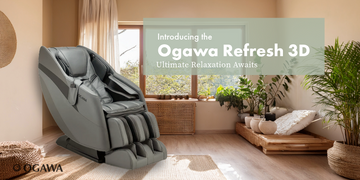When it comes to taking care of your body you might first be thinking about eating a healthy diet, getting enough exercise, and taking time for your mental health, as well. But have you considered the importance of a healthy spine?
The fact is, the spinal cord is a column of nerves that connects your brain to the rest of your body. It’s central to your ability to control movement, participate in physical activities, and to your organ function. This reality is why you should include ways for how to keep your spine healthy as you age as part of your daily personal health routine.
We’re taking a look at some spine care tips that will teach you how to maintain a healthy spine, allowing you to stay active as you age.
5 Spine Care Tips for a Healthy Spine
As you can see, a healthy spine is immeasurably important to your overall health. Learning how to take care of your spine can be as simple as making a few lifestyle adjustments! If you’re an active person, you may already be doing a few of these (though it never hurts to understand why they help or to do more for spinal health). If you lead a more sedentary lifestyle, it’s never too late to start learning how to keep your spine healthy!
A few spine care tips on how to keep your spine healthy as you age are:
- Always lifting properly and recognizing your weight limits
- Practicing good posture
- Staying active and exercising regularly
- Experiencing the health benefits of massage
- Sleeping properly
Healthy Spine Tip #1: Learn How to Lift Properly
A very simple way to help maintain a healthy spine is to learn how to lift properly. Lifting heavy items the wrong way can put added stress on your lower back muscles and result in injury or back pain. Commonly referred to as throwing your back out, back muscle strain can be exceptionally painful. Habitually lifting heavy items the wrong way may even result in chronic back pain or severe spine injury.
While you may be familiar with the lifting instructions to always lift using your knees, there’s more to learning how to lift properly than just that. It’s also important to remember that while carrying a heavy object you should lead with your hips and not your back. Leading with your back and hunching over can cause just as much stress on your back as lifting incorrectly. Engage your abdominal muscles and put your chest forward. This can greatly decrease your risk of pulling a muscle or slipping a disc.
Healthy Spine Tip #2: Practice Good Posture
Loads of people have poor posture and don’t even realize it! When you’re relaxing at home on the couch or sitting in your office chair at work, do you find yourself slouching? This is a perfect example of poor posture that could lead to spinal problems down the line.
The natural curvature of the spine forms an “S” shape. When you’re sitting with good posture, the natural curves of your spine are supported and your spine is in alignment. Practicing good posture is a simple lifestyle adjustment for how to keep your spine healthy as you age that may be difficult to remember at first, but will quickly become second nature.
If you’re at work, ensuring you have an ergonomic workspace setup is the easiest method for how to improve posture there. Even if you’re using an ergonomic chair and you’ve set up your workspace accordingly, be sure to stand and move around at regular intervals to avoid pain from sitting too long. You may also be interested in having an adjustable height desk that allows you to stand periodically as you work to stretch your spine.
When you’re at home, make a point to sit up straight and not slouch while you’re sitting on the couch or at the table. You could also consider getting a reclining chair like a luxury massage chair that offers you the lumbar support you need to maintain good posture.
Healthy Spine Tip #3: Stay Active and Exercise Regularly
Part of learning how to keep your spine healthy as you age is making sure you’re taking care of your body as a whole. Regular exercise is important for your overall health, as well. When you exercise, be sure to work on building up strength in your core muscles. These muscles support your spine, making them crucial to spinal health.
Is working out at a gym, going for a run, or taking a brisk walk simply not your thing? That’s okay, too! Any form of physical activity and exercise can help you with how to take care of your spine. One great activity is swimming. The buoyancy of water helps support your spine as you swim and many swim styles actively engage your core muscles. The spinal support of the water also helps reduce your risk of a spinal injury as you do this, making it a great option for people of all ages.
Healthy Spine Tip #4: Spine Massage Benefits
When it comes to how to keep your spine healthy as you age there may be no better way than massage. To enjoy one any time you like and take care of your spine, consider the benefits of owning a massage chair. The evolution of these chairs have eliminated the difference between using a massage chair vs human massage. In fact, the benefits of massage chairs for health are arguably better!
What makes a massage so special for a healthy spine? Studies have shown the potential health benefits of massage for both physical and mental health. Full body massages reduce stress, improve blood circulation, help soothe sore muscles, and may elevate your mood. Relaxing in a massage chair lowers your cortisol levels. This hormone is our body’s natural reaction to stress and can cause you to tense up the muscles in your core. This tension is bad for your spine and may lead to back pain as well as an increased risk for depression or anxiety.
Other massage chair benefits include being able to use them in the privacy of your own home, that they pay for themselves compared to massage therapist appointments, and massage chair features they may possess.
There are a variety of massage chair features that are perfect for how to take care of your spine. Some of these include the benefits of heat therapy, chromotherapy treatment options, and AI massage capabilities that allow your chair to analyze your body tension and emotional state to provide a personalized experience each time!
When you’re learning how to choose a massage chair for your home, consider your lifestyle and which features meet your needs. For example, compare an S-track vs L-track massage chair. While both are wonderful for maintaining a healthy spine, an L-track chair may provide especially useful massage chair benefits for athletes as the massage rollers continue beyond the lower back to the glutes and top of the hamstrings.
Healthy Spine Tip #5: Spine Support While Sleeping
Last, but certainly not least in our exploration of how to keep your spine healthy as you age is having spine support while sleeping. If you’re sleeping in a traditional bed, this means ensuring that your pillow supports your neck’s natural curve as it connects to your spine. This can be affected by your preferred sleep position, so be sure to buy the right type of pillow for you.
If you’re sleeping in a chair of any kind, be sure to take measures for how to improve your sleeping posture otherwise you may be doing your spine more harm than good. Some people who may benefit from using or closing their eyes for a few minutes in a massage chair (especially a massage chair with zero gravity reclining capabilities) are those with back injuries, older individuals, or pregnant women.
Learning how to keep your spine healthy as you age is as simple as making a few adjustments to your lifestyle. These changes aren’t overwhelming and will become second nature the longer you do them. Always practice good posture, lift heavy items properly, stay active, and choose a massage chair to keep a healthy spine throughout your lifetime. You’ll thank yourself for the effort!
Learn more about the benefits of massage chairs for health and different features available with these guides:
- What Is a 3D Massage Chair?
- What is a 4D Massage Chair and Its Benefits?
- The Difference Between Massage Chairs and Zero Gravity Recliners
- 7 Benefits of Massage Therapy At Home
- 5 Deep Tissue Massage Benefits You Need to Experience





